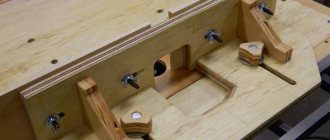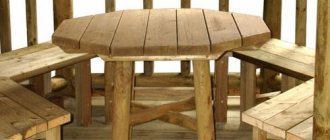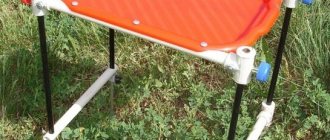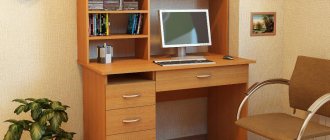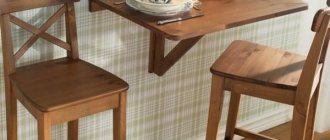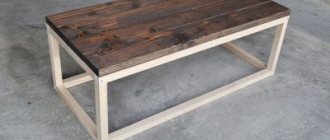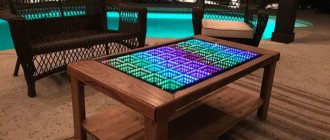Purpose
The effectiveness of this simulator has long been proven by experts. Such tables are intended for the treatment of various diseases of the musculoskeletal system .
Attention : in case of severe diseases, such as arthrosis and arthritis, the inversion table must be used extremely carefully and under the supervision of specialists.
Inversion tables are effective for the following diseases and pathologies:
- moderate postural disorders (initial stage scoliosis);
- chronic spasms in the muscles of the back or neck;
- as a prevention of varicose veins on the legs;
- for training people who lead a sedentary lifestyle;
- chronic stress as relaxation;
- to strengthen the back muscles.
Keep in mind that you shouldn’t expect any special miracles from using an inversion table .
Although it is used for the treatment and prevention of various pathologies, as a separate treatment method, it has little effect. Since the simulator treats existing diseases and does not in any way affect the cause of their formation.
Therefore, exercises on an inversion table must be combined with other treatment methods, for example, lifestyle changes.
You can buy a finished product in a store, or you can make it yourself. If you have little experience in manufacturing and assembling furniture items, you can resort to the second option.
Benefits of DIY
An inversion table is a device that is used for therapeutic and preventive purposes in cases of dysfunction of the musculoskeletal system. Using such a device, you can perform simple exercises for the spine, ensuring the straightening of the vertebrae, the flow of blood and lymphatic fluid to hard-to-reach places. Regular exercise on the simulator can improve your overall health and lead to the following positive effects:
- improve posture;
- strengthen the ligamentous apparatus;
- prevent the development of hernias, protrusions, infectious, inflammatory diseases of the spine;
- improve blood circulation and lymphatic drainage.
Activities based on the position of the body upside down are recommended for all ages. It is especially useful for older people to do them. Smooth movements and work on the simulator can strengthen blood vessels and prevent the development of the most dangerous diseases: vegetative-vascular dystonia, hypertension, stroke, heart attack, ischemia.
A noticeable disadvantage of an inversion table is its cost. For this reason, more and more often people who suffer from pain in the back and cannot afford an expensive exercise machine or massage are trying to make a wellness device with their own hands. Even taking into account the cost of the necessary materials, a self-made product is several times cheaper. If all drawings are followed and quality materials are used, you can obtain a safe device for treatment.
Improves posture
Strengthen the ligamentous apparatus
Prevents spinal diseases
Improves blood circulation and lymphatic drainage
Savings when making your own
Material
Having decided to build a table for studying with your own hands, carefully select the materials for it. It could be:
- natural wood. It is environmentally friendly, durable and has high technical characteristics;
- Chipboard or laminated chipboard. They have good performance, have a wide color palette, are lightweight and easy to use;
- MDF. It features excellent performance, ease of use and affordable cost .
Help : most often, chipboard or boards are used to make a simulator at home.
Labor costs
The time spent on making an inversion table with your own hands according to the drawings is combined in the following table.
| № | Work stage | Number of hours |
| 1 | Timber cutting | 1 |
| 2 | Sanding wood | 2 |
| 3 | Varnish coating | 2 |
| 4 | Assembling the simulator | 6 |
| 4 | Total | 11 |
Taking into account technological interruptions in work, it took 2 days to make an inversion table with our own hands.
Drawing and dimensions
Before you start making the simulator, you need to make a competent drawing. Here the dimensions of the product, materials of manufacture, and methods of fastening individual elements must be thought out. Keep in mind that how effective and useful the classes on it will depend on a well-designed project.
The sizes are selected based on the person who will use it.
Tip : Use the following dimensions as a guide: 120x60x140 centimeters.
General recommendations and safety precautions
If you have no experience in using such a simulator, you need to act very carefully and follow several important rules:
- If the user's height exceeds the permissible parameters for a particular model, using the table can be hazardous.
- For beginners in their first lessons, it is not recommended to set the inclination angle to more than 10º, as this can lead to dizziness.
- You should start your classes slowly and carefully.
- During the first lessons, it is better to have someone nearby for backup.
Tools
The tools you need to prepare are:
electric jigsaw;- drill;
- screwdriver;
- screwdrivers;
- grinding machine;
- knife;
- wrench;
- hammer;
- brushes
Materials you will need :
- wooden beam;
- metal tube;
- abrasive wheel;
- bolts and nuts;
- washers;
- braided cord;
- steel pipe;
- wide cargo belt;
- screws.
How to make it yourself
First, you need to prepare all the materials yourself based on the measurements in the selected drawing. It is necessary to saw the slats and polish them with a grinder with an abrasive wheel of P 220 grit. The boards should not cling to clothing or damage the skin during exercise. Finally, coat them with furniture varnish and let them dry thoroughly.
Next, everything is done according to the instructions:
- In places where structural elements are connected, make holes for metal tubes. Next, fasten the boards together.
- Insert bolts and washers into the tubes based on the existing diagram. Using nuts, secure the hinge joints of the legs, levers, and support elements to these places.
- To enhance the safety of using the simulator, secure the cross bars with screws.
- Attach restrictive polymer cords to the legs with screws, the location of which can be seen in the diagram. To prevent them from unraveling during use, secure the ends with a drill.
- Attach straps at the bottom of the tabletop that will hold your feet while doing the exercises. To enhance safety, protection will also be required in the chest area.
Finally, attach rubber to the ends of the table legs to prevent it from sliding. After assembling and checking the strength of the product, coat the homemade exercise machine with paint of your favorite color. In areas of damage you will need to use plaster.
More detailed instructions for making an inversion table with your own hands can be found in specialized forums. People willingly share their experiences, telling how easy it is to build a health structure, how much material is needed, and what the approximate cost is. Using ready-made tips, even a beginner can cope with such a task.
How to do it?
After preparing the necessary materials and tools, you can proceed to the manufacture and assembly of the simulator. To begin with, according to the existing drawing, is detailed . You can do it yourself using a grinder and grinder, or you can order it from a specialized company. Keep in mind, when contacting a furniture production company, you will receive parts completely ready for assembly with edged sides .
If you are cutting out the product yourself, carefully draw a sketch of the future product on the surface. Next, the manufacture and assembly of the table is divided into the following stages:
It is better to use chipboard or laminated chipboard as a countertop.
Its thickness should be about 3 cm. Using this material, you can assemble a table measuring 1.5 by 2 meters. If you cannot find a tabletop of the required thickness, glue two sheets of chipboard measuring 1.6 cm. To do this, cut out two identical pieces, carefully coat each side with furniture glue, fold the sheets together and tighten them with 2 cm screws along the edges and in the middle.Select a drill diameter such that the screws can be inserted into the holes without any problems.
- Even when using laminated chipboard with a beautiful texture, after gluing and tightening them with screws, it is recommended to treat the surface with varnish or paint . If there are small defects that form during the manufacturing process, cover them with putty before painting.
- Technological holes are drilled in the places where the structural elements will be mated together .
- Metal tubes are inserted into them .
- We connect the slats by hammering the pipe sections into the holes with a hammer.
- Bolts and washers under the nuts are inserted into these tubes .
Use a wrench to secure the bolt heads.- We fasten the hinge joints of the legs, levers and supporting planes with nuts
- Next, install the cross bars and secure them with screws. They will guarantee the safe operation of the product.
- Restriction cords will be attached to the legs of the machine . Their ends are drilled to prevent the fibers from unraveling.
- The cords are attached with screws and washers to the table legs.
- To allow the rear support frame to move easily, two hinges are installed at the bottom.
- At the bottom of the table, a series of loops are attached with screws from the tie strap to secure the feet and legs.
- You can also make a system of straps to secure the chest.
- rubber can be glued to the end of the legs to prevent the machine from slipping .
After assembling the inversion table, to give it aesthetics and to extend its service life, the boards are coated with paints and varnishes.
Tip : A massage table, a good desk and a comfortable laptop table can also help maintain your health.
Manufacturing instructions
The first stage, which is carried out by a master who has decided to carry out all the work himself, is the preparation of all elements. The slats are sawn to obtain the required length. All elements are polished using a grinding machine with an abrasive wheel. To prevent wood or chipboard from clinging to skin or clothing, the grain size should be approximately P220. It is advisable to coat the boards with varnish, thus increasing their service life and resistance to moisture.
In accordance with the instructions, making tables requires the following steps:
- Make special holes in those places in the structure where metal tubes should be located.
- Fasten the boards using a drawing chosen or developed independently.
- Insert the fasteners into the tubes using the diagram. Secure the hinge joints of all elements - legs, levers, stops.
- Secure the cross bars using screws.
- Attach restrictive cords, the location of which is selected according to the diagrams. Fix the ends of the elements using a drill, making sure that they do not unravel during use.
- Secure the straps located below to hold your feet in place while performing exercises. Make the same protection in the chest area.
- Attach rubber to the ends of the legs to prevent the table from sliding.
- Check the strength and build quality.
- Complete the production by painting all parts with paint of the desired color. Wait until it dries.
Types and features of desk tops, selection criteria
You can use other, more detailed assembly instructions. On online resources there are enough descriptions and stories from home craftsmen who also assembled inversion tables on their own. Using the correct instructions, even a person without experience in carpentry or assembly work can easily cope with this task.
Prepare details
Secure the hinge joints of all elements
Secure the cross bars
Attach restraint cords, secure straps
Paint, check strength and build quality
